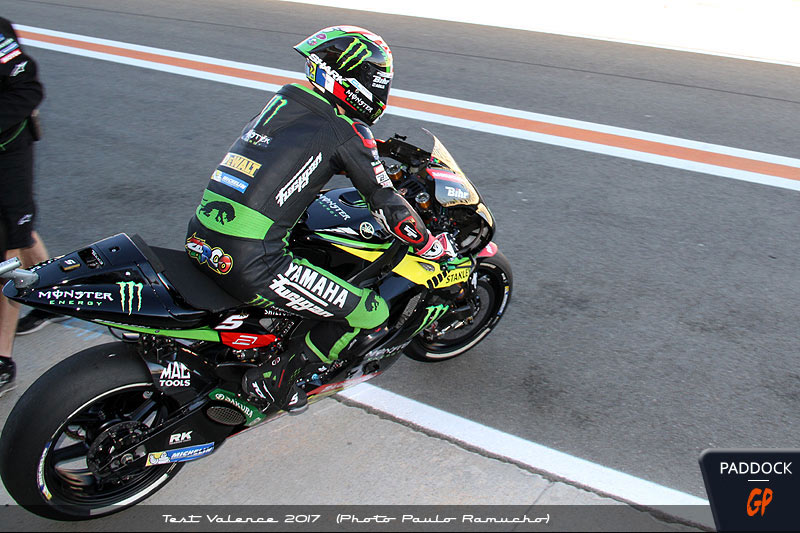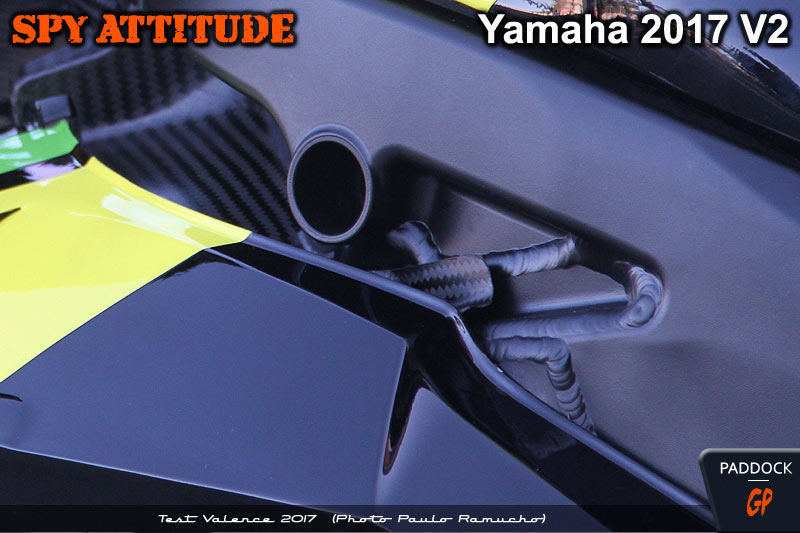This “Spy Attitude” is a little unusual since it begins with an exclusive interview with Hervé Poncharal including the first two parts can be found here.
Why?
This appears a priori contradictory with the very nature of our series ofinquisitorial articles, since it seems obvious that the big boss of the Tech3 team, despite the excellent relations we have with him, is not going to tell us the slightest secret concerning the Yamaha M1 that Johann Zarco will probably use next season...
But there have been so many articles in the press on this subject that it seemed essential to us to get the most precise information possible with the person who undoubtedly knew the most!
Hervé Poncharal, we have heard and read almost everywhere that Johann will not have a factory motorcycle next year. What can you tell us?
Hervé Poncharal : “Well, perhaps things could evolve during the negotiations that I spoke to you about for 2019 and 2020 regarding the status of Tech3 (see here). But for 2017 and 2018, in the contract that binds us to Yamaha, nothing is specified about the specifications of the machine, nothing! They just need to get me some M1s. Anyway, that wouldn't mean anything because for Yamaha, our model next year will be a 2018 model, even if we know that it will be a bike that rode in 2017 and that the real vintage is 2017. This year, we were riding a 2016, but at Yamaha, it was called Zarco 2017. So it's very complicated, but from what I was told in Valencia, and that we were reconfirmed at Sepang, and that you also reported following the press conference in Valencia (see here), it is clear that, unless there is a last minute change, there will be two "full factory" riders with the 2018 bikes, with the latest developments and which will be constantly updated throughout the season , it's Valentino Rossi and Maverick Vinales.
From what I know today, on December 12, Johann Zarco will have the same treatment and the same type of support that he will have had this year in 2017. And there will be, in quotes, the same gap that there had this year. So this year, the gap was not very significant, which allowed us to achieve the performances we know. So next year, will they find developments and the gap will be bigger, it's possible but I don't know. But in any case, Yamaha has confirmed that they will not do what Honda did with Crutchlow, where the equipment is of the same vintage, and what Ducati is doing with Petrucci, where again the equipment is of the same vintage. Ultimately, at Ducati and at Honda there are three factory riders, even if the third is in an independent structure. Yamaha told us that they would not do that and that they would not change the way they manage their involvement in MotoGP, through their official team and the independent satellite team that is Tech3. »
Technically, Valentino Rossi said they were going to use 2016 chassis…
“It's the starting point for the tests at Sepang, but anyway, they won't do the Qatar Grand Prix with it, that's for sure. This is just the starting point. Afterwards, how they will develop it, I don't know. »
For Johann, it will be more like 2017…
" Yes for now. »
The 2016 and 2017 frames being very similar overall, the main difference would be at the engine level…
“There are three differences. The main one, I think it will be the engine, but you also have an important element which is the suspensions. Plus the aerodynamic package. Those are the three things, because the rest…
The new engine, as we know, will only be available for Rossi and Vinales. »
On this subject, there has always been a difference between your engines and those of the factory team. Some figures have even recently leaked to the press... Can we talk about it?
“All I can tell you, I, Hervé Poncharal, owner of the Tech3 MotoGP team, is that, and this year 2017, and in 2018, we have not had and we will not have the same engines. But I won't go into any detail about the technical differences. Yamaha has given us 20 magnificent years, we work together hand in hand, there are agreements, and in these agreements, there is, among other things, confidentiality on a technical level that I respect. I have always said what I had to say, whether it was politically correct or not, but it is completely logical that there are things that we cannot say because we are still at the level the highest in motorcycle sport, and there are huge investments being made in technologies. Manufacturers invest a lot and when they find a little something, we don't have to go into detail about the technical specifications of our package or that of the factory. If there are observers who manage to detect things, good for them, but it's the game of police and thief, and in any case, as a Yamaha team, I can't say anything other than that. is that we will not have the same engine. »
Once these details have been provided by Hervé Poncharal, and we thank him greatly, we have therefore put on our costume of "thief", or rather "spy" as the title of the article indicates, to study in detail, thanks to the photos at our disposal, the bikes used by Johann Zarco during the Valencia tests and, thus, try to determine what he will ride with next season…
During the first MotoGP 2018 tests in Valencia, then during private tests in Sepang, the French rider had the opportunity to try different versions of the 2017 Yamahas in order to rough out his opinion on each of them and, possibly, choose the one with which he will do the 2018 season.
The problem for us, poor technical enthusiasts educated by the black and white photos of Moto Journal at the time of the Yamaha TZ, is that it has been a long time since, at Yamaha as at Honda and unlike Ducati (see here), it is very difficult to see differences with the naked eye between the different versions of a motorcycle, since we are now content to work on rigidities, mass distribution and geometry. However, there are a few, and we can try to shed some light on what happens in the boxes, once the doors are closed...
During the first day of testing in Valencia, Johann Zarco tried a 1 M2017 whose frame has the particularity of having received a welded reinforcement. The French pilot declared himself very satisfied with it (see his full statements here) and even came close to his best time in qualifying (for those who don't yet know how to recognize a 2017, there's still time !).
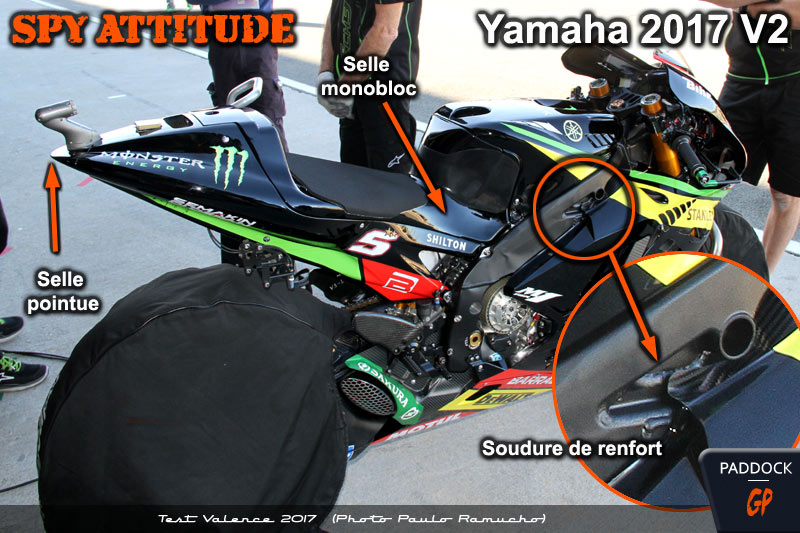
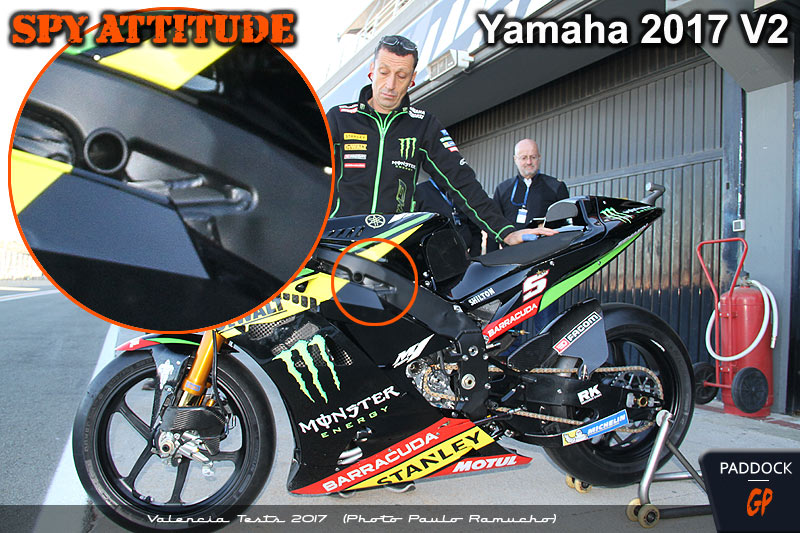
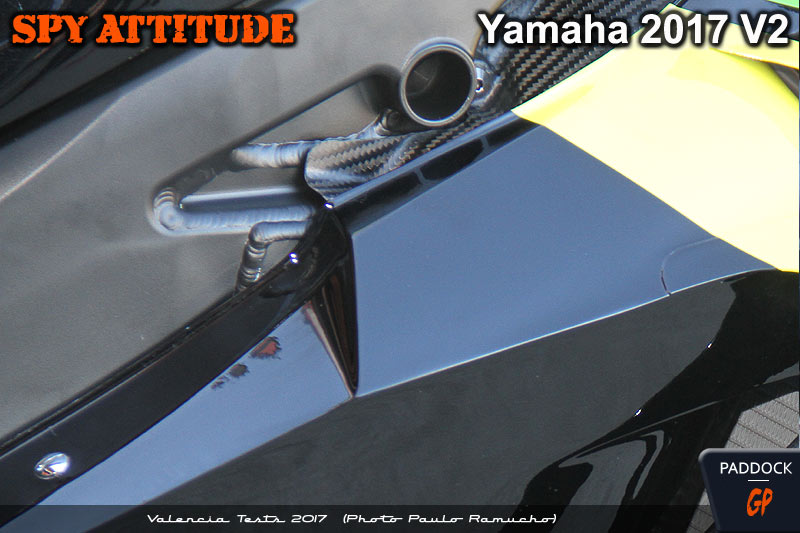
Even if Johann Zarco doesn't want to know it himself (see interview with Guy Coulon here), we sought to identify this framework. It appears that this is the frame that we will call V2, tested in post-Barcelona tests and used from Assen then, as in the photo below, in Germany.
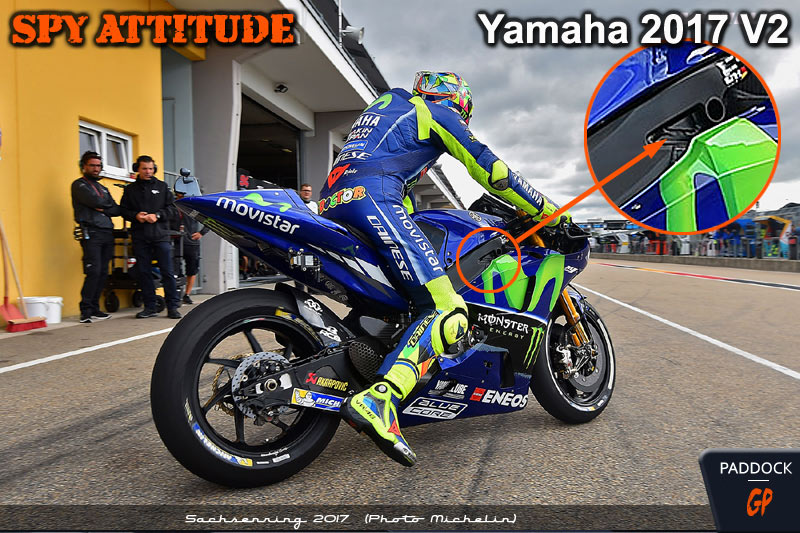
On the second day of testing in Valencia, the French driver had another 2017 frame, which no longer presented this reinforcing weld. Johann Zarco seems to be even more satisfied with it because, even if it did not allow him to beat his time, it is much easier to use, guaranteeing a profitable energy saving at the end of the race (see here).
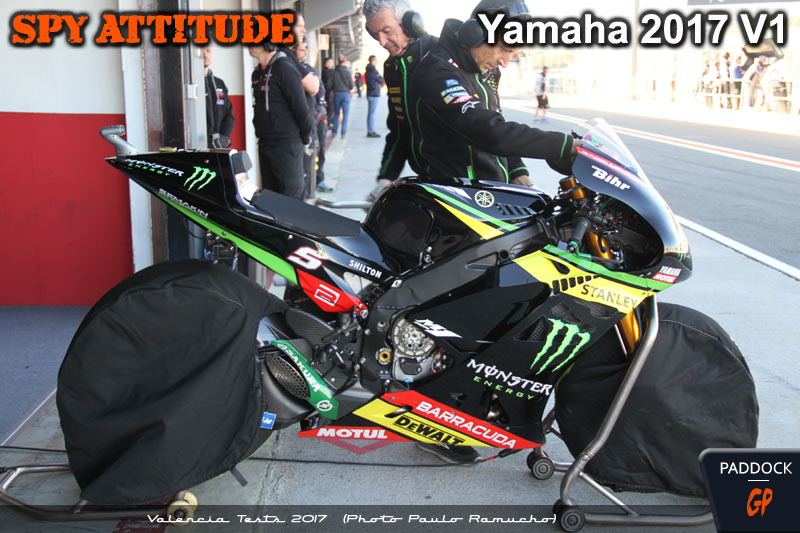
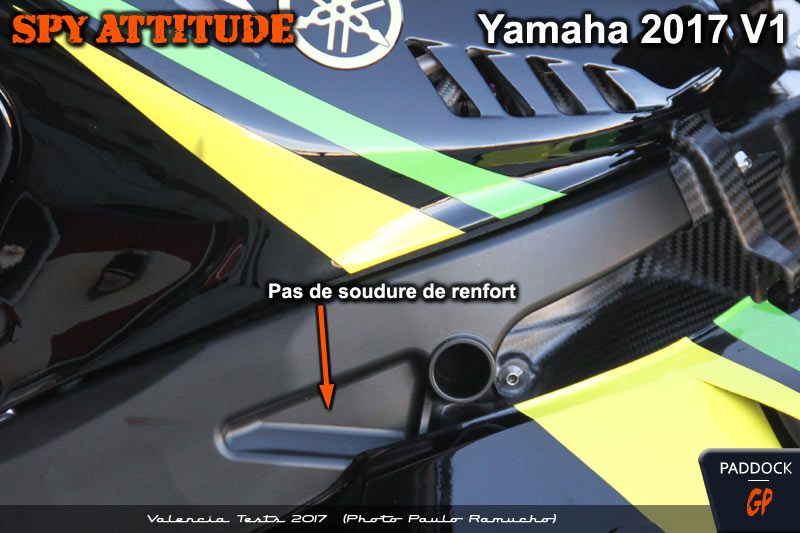
Was it the V1 that won with Maverick Vinales, the V3 that appeared at Silverstone or a possible V4 used at the end of the season before the official team returned to its roots in Valencia using the 2016 chassis?
Unfortunately, we did not notice any difference allowing us to differentiate these different versions with the naked eye, only different rigidities in certain areas and weight distributions distinguishing them… 🙁
This is where Lin Jarvis comes to our aid by having declared in an interview published by La Gazetta dello Sport on November 21 about Johann Zarco's future motorcycle: “the 2016 is not a good bike to win. Certainly, we will not give him the bike at the end of 2017.”
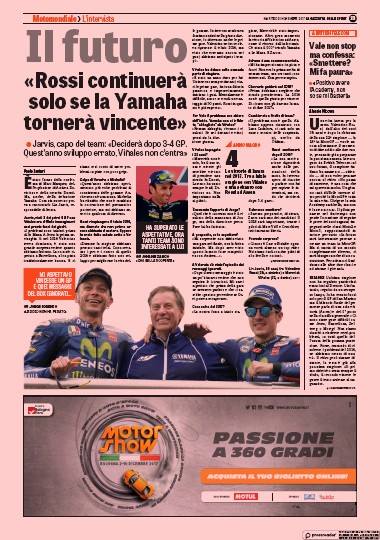
And that’s rather good news for the French driver! On the one hand this excludes the chassis at the end of 2017 which always suffered when there was little grip (whether because of the rain or the road surface) and which never won, in favor of either the V2 with victorious weld at Assen with Rossi, either V1 victorious in Qatar, Argentina and Le Mans with Vinales…
French enthusiasts can therefore rest assured; Johann Zarco will have a good chassis in 2018 !
There remain the points mentioned by Hervé Poncharal, namely the aero pack, the suspensions and the engine.
1/ Aerodynamic pack:
At the end of the Valencia tests, Johann Zarco fitted the latest version approved by Yamaha on his 2017 V2. We're not sure if he used it in Valencia, but regardless, it went to the Sepang tests...
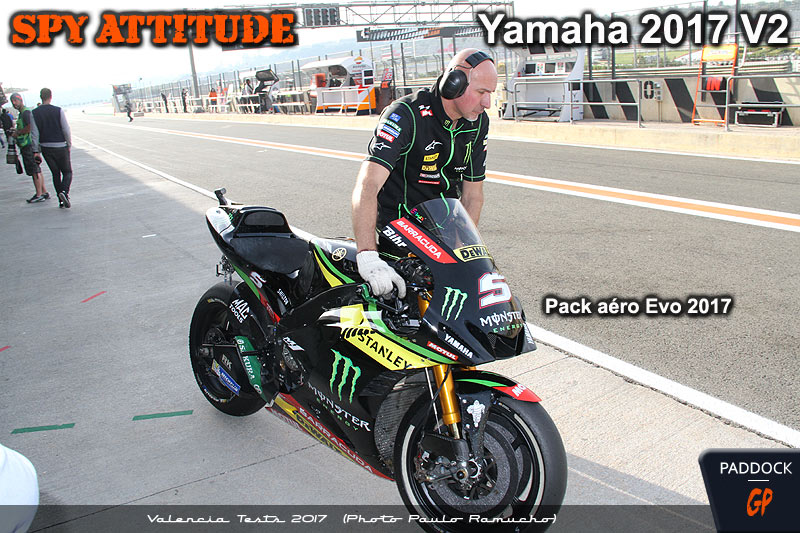
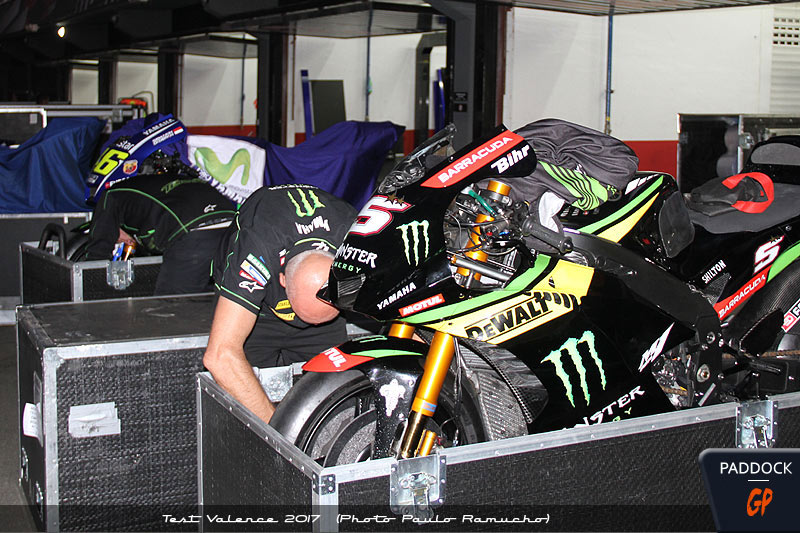
In the official team, we tried pre-2018 aerodynamics on a 2016 chassis, but this will have to be modified before homologation (see here).
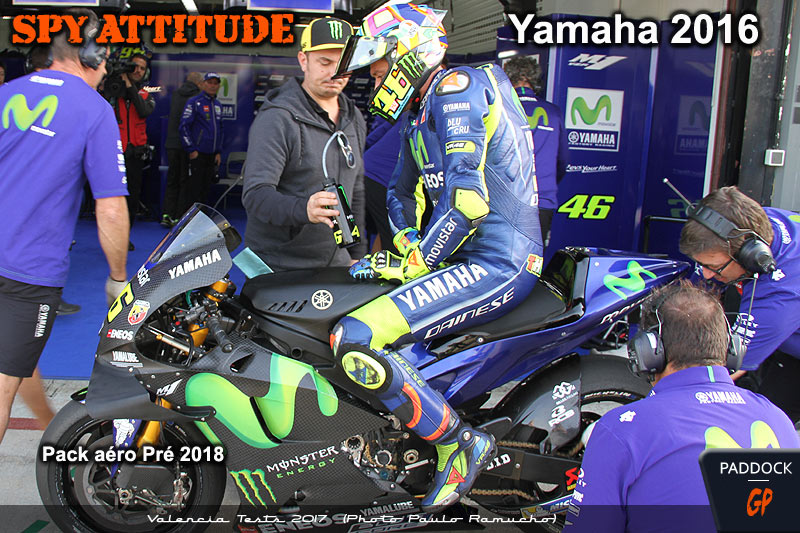
2/ Suspensions:
It can be noted that the official Yamaha riders, unlike Marc Márquez and the Ducati officials, have tended to no longer use the Öhlins carbon fork during the last Grands Prix.
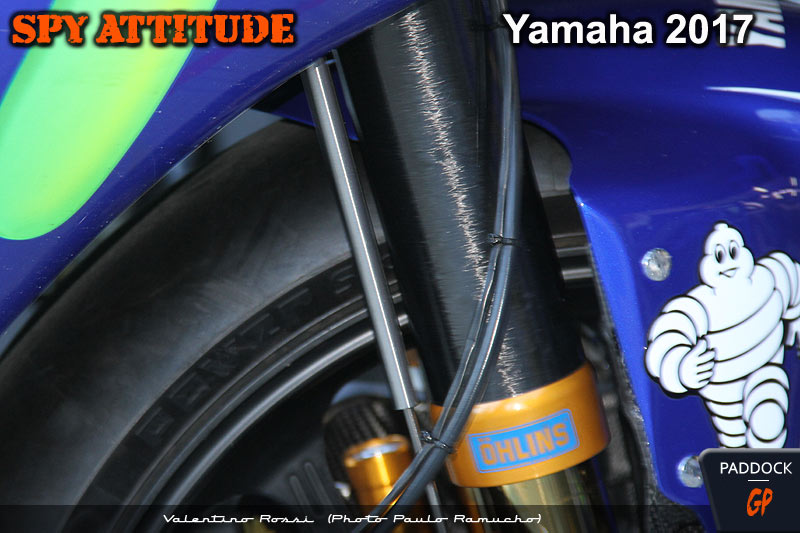
3/ Engine:
On the engine side, if it is true that there is traditionally a difference in speed between the official motorcycles and those of the Tech3 team, this resulted in 2017 by differences of between 0 and 5 km/h depending on the circuits, i.e. relatively little because the top speed remains conditional on traction when exiting a corner. Let's see what happens in 2018...
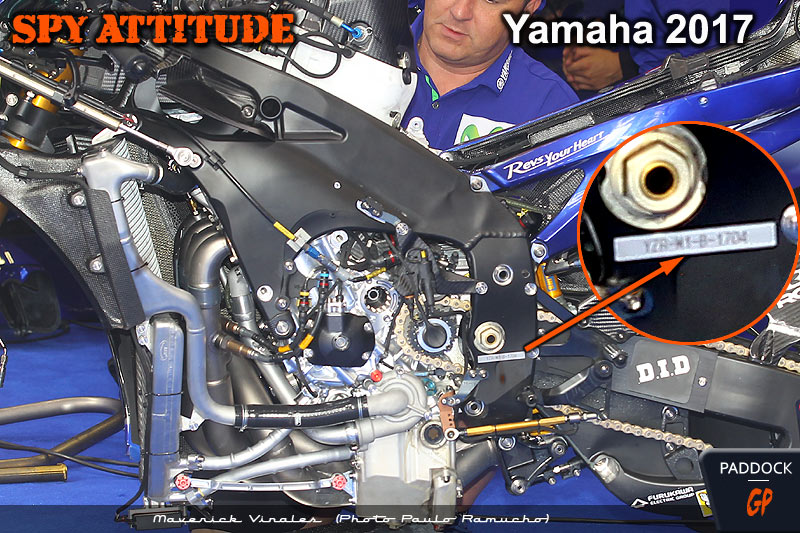
In the end, Johann Zarco will not have a factory motorcycle in 2018 (consisting of developments still to be determined on a 2016 basis) but, after this point which we hope is as complete as possible, it appears that he will rather have an M1 undoubtedly victorious in 2017, able to defend its chances with less problem when grip is low.
Ultimately, it's perhaps not any worse, the official drivers having undoubtedly suffered due to mistakes in the development of the M1 this year...
Maverick Vinales also seems to confirm this by indicating that he may have lacked patience: “I should have been stricter in asking for things, trusting my feelings and not those of others. I always try to be ahead, in all situations and all sessions. Maybe my mistake was not to continue with the old chassis”.
In short, we believe it!
